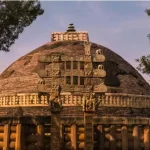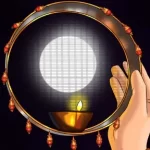Rath Yatra |
Throughout the year, the Jagannath Temple celebrates a number of events. The Nobo Koliboro is celebrated with what are arguably the biggest festivities.
The Nobo Koliboro commemorates Lord Jagannath’s rebirth and His transition from one body to another. This custom occurs every fifteen to nineteen years. The ceremony is most auspicious during the Jyaistha (June-July) month of the adhimasa year, which has two full moons.
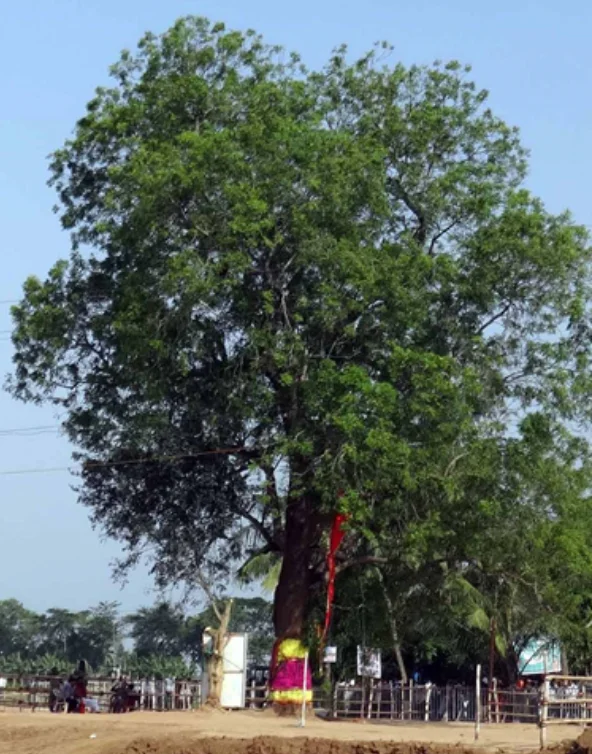
The first celebration of the year is the Bana Yaga yatra. The yatra’s participants act out the arrival of Lord Jagannath in Puri. The Gajapati king of Puri assigns parts to different performers.
The guys take on the roles of Vishwavasu, the tribal devotee of Nilamadhava; Bidyapati, the first Brahmin to see Lord Jagannath; Lenka Sevak, the temple employee in charge of writing; and Vishwakarma, the universe’s builder and divine engineer.
The principal performers tie a unique Khandua on their foreheads, a silk cloth stitched with colored threads. They hand-weave passages from the Gita-Govinda into the material of this Khandua.
Journey to Dasaphalla
They then set off on a journey to Dasaphalla in search of a tree suitable for carving the god, which is said to be appropriate for housing the Lord’s Bramha, or soul.
On their way, they halt at the Mangala Devi temple in Kakatpur, where they present gifts to her on the Lord’s behalf. They ask for her help in finding the tree.
It is said that the Vishwakarma Servitors dream about the location of the tree while sleeping in Devi Matha. The following morning, they search for the Daru (tree). The Lenka locates the tree, decorates it, and places Lord Vishnu’s sword, the Sudarshana, beneath it.
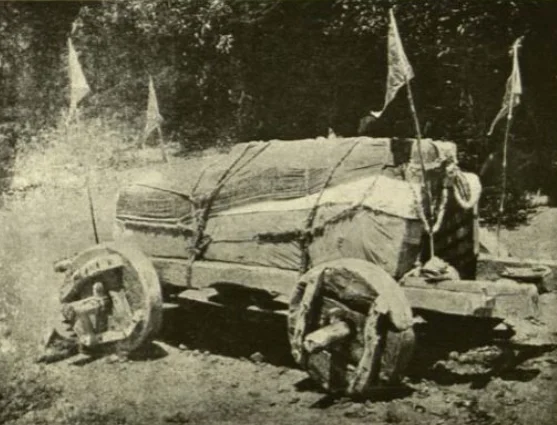
Making of the Cart for Ratha Yatra
After that, they clean and revere the tree. Before the Vishwakarma servants cut the tree into what are known as Chaupata logs, they touch it with a gold and silver axe.
They take these sacred timbers back to the temple on a tamarind wood carriage. They firmly wrap the Chaupata in silk, secure them with Khandua cloth, and rope them into position on the wagon.
After they carry the logs into the Puri Temple and store them for a month away from prying eyes at Nirman Gruha, also known as “the house of creation.” The top priests sculpt the Lord’s new body.
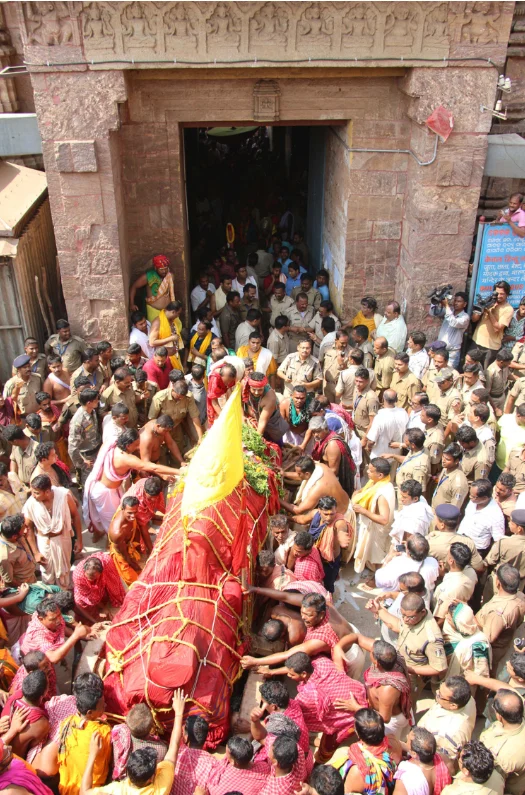
The transfer of the Bramha
The oldest priest has the right to carry out the Ghata Paribartan, also known as “the transfer of the Bramha.” After performing a suddikriya (a purification ceremony), they bury the previous idol and some parts of the rath from the previous year.
They commemorate the Lord’s birthday as Snan Yatra in the month of Jyaistha. Amid loud bugles, music, and festivities, they bring out the Lord and His siblings.
Traditionally, they cover them from view, adorn them with flower crowns, and submerge them in 108 pots of water drawn from the Suna Kuan (golden well), a well located inside the temple compound.
During a darshan after taking a bath, they clothe the deities in Hastibesha, or elephant clothing. This custom originates from collective memory.
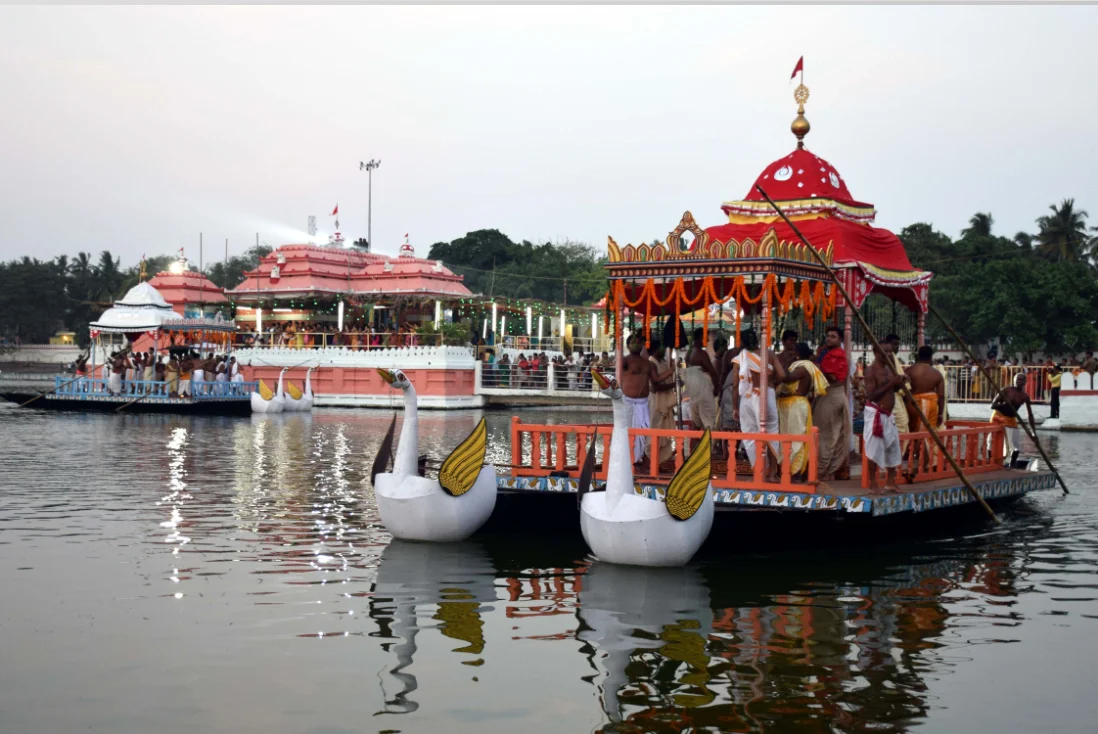
It is said that the Gajapati monarch once invited a well-known Hindu scholar to his court. The scholar declined the king’s invitation to go to SriMandir with him, saying that he solely worshiped Lord Ganesha.
When Lord Jagannath—the adored elephant god Ganesha—appeared to the hesitant scholar, he was taken aback. The Hastibesha symbolizes the love that the Lord has for every one of His disciples.
ALSO READ: Sanchi Monument – भारतीय संस्कृति का अमूल्य रत्न
Rath Yatra Anavasara Period
It is thought that following this lavish bath, the gods get sick. They take a fifteen-day hiatus from the public eye while they heal.
We refer to this era as Anavasara. Painting the eyeballs on the newly showered bodies of the Lords is how the Netroutsav is executed. The Rath Yatra starts on the next day.
Thousands of people kneel in the dust and bow their heads as they finally display the holy pictures and set them atop their chariots.
With a single cry, the enormous crowd pushes the wheeled structures down the wide streets toward Lord Jagannath’s rural home while rushing forward and backward. – Puri, 1886’s Imperial District Gazetteer.
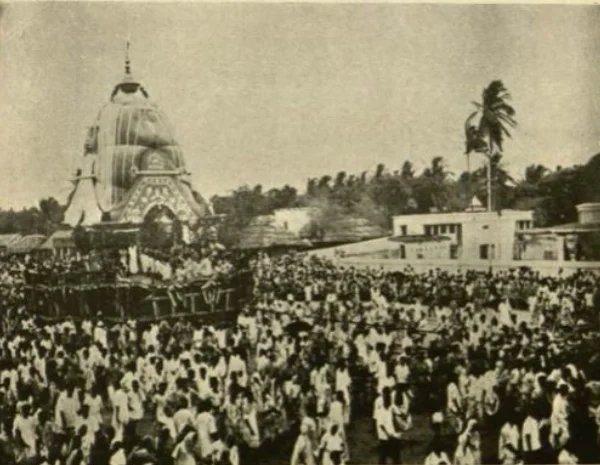
They construct a rath for each of the three gods—Lord Jagannath, Goddess Subhadra, and Lord Balbhadra. The primary deity and nine others reside in each.
They also place representations of nine sages on each chariot, symbolizing the universe’s nine planets. They can identify a rath by its charioteer, horses, name, color, and even the reins used to steer it.
Lord Jagannath’s crimson and yellow chariot is the biggest rath, reaching a height of 45 feet. It takes two months to build alone, and it’s named Nandighosa.
The honor of dragging the Lord’s chariot belongs to the horses Shankha, Shveta, Balahaka, and Haridasva. The horses are reined by Maruti, the Lord’s charioteer.
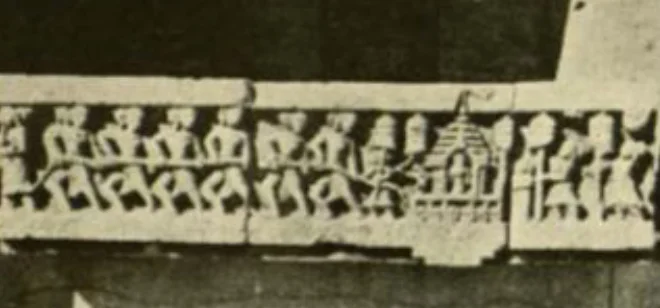
Inauguration of this Rath Yatra
The celebrations kick off with the Chera Panhara. In this ceremony, the Gajapati monarch, in his capacity as a “servant of the Lord,” sweeps each rath’s platform before allowing them to continue.
Devotees then draw these massive chariots three kilometers down the main avenue to the “Garden home” of the goddesses, which is the residence of their aunt Gundicha. They spend a week living with her.
During this time, people believe that Goddess Laxmi, furious with her husband, Lord Jagannath, for abandoning her, damages His rath. Today, they perform this ceremony on Hera Panchami; the word “hera” means to seek or discover.
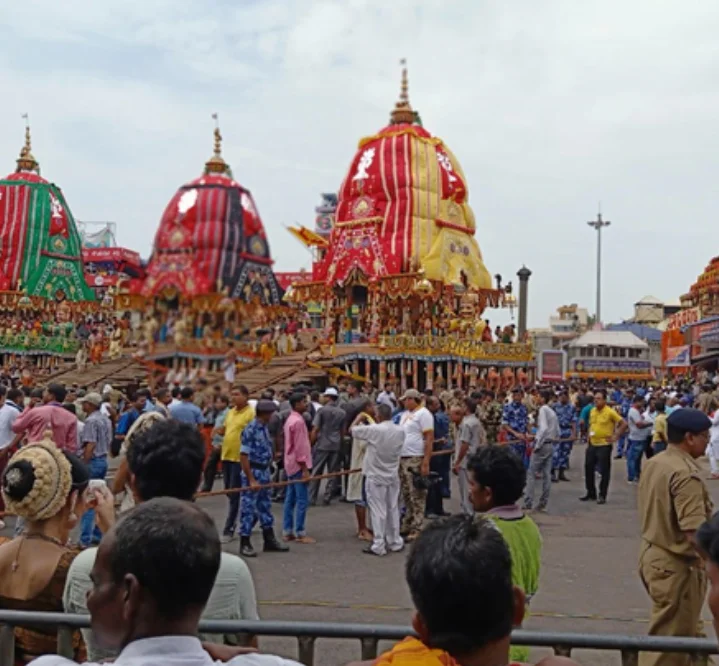
Siblings
The three siblings set off on the “Bahuda Yatra,” or the trek back, after leaving their aunt’s home. Devoted followers of Srimandir anticipate their arrival and welcome them.
After donning all of the jewelry created from the gifts given by their followers, the gods assume their gold-laden form, known as the “Sunabesha.” Their return is symbolized by this brief darshan.
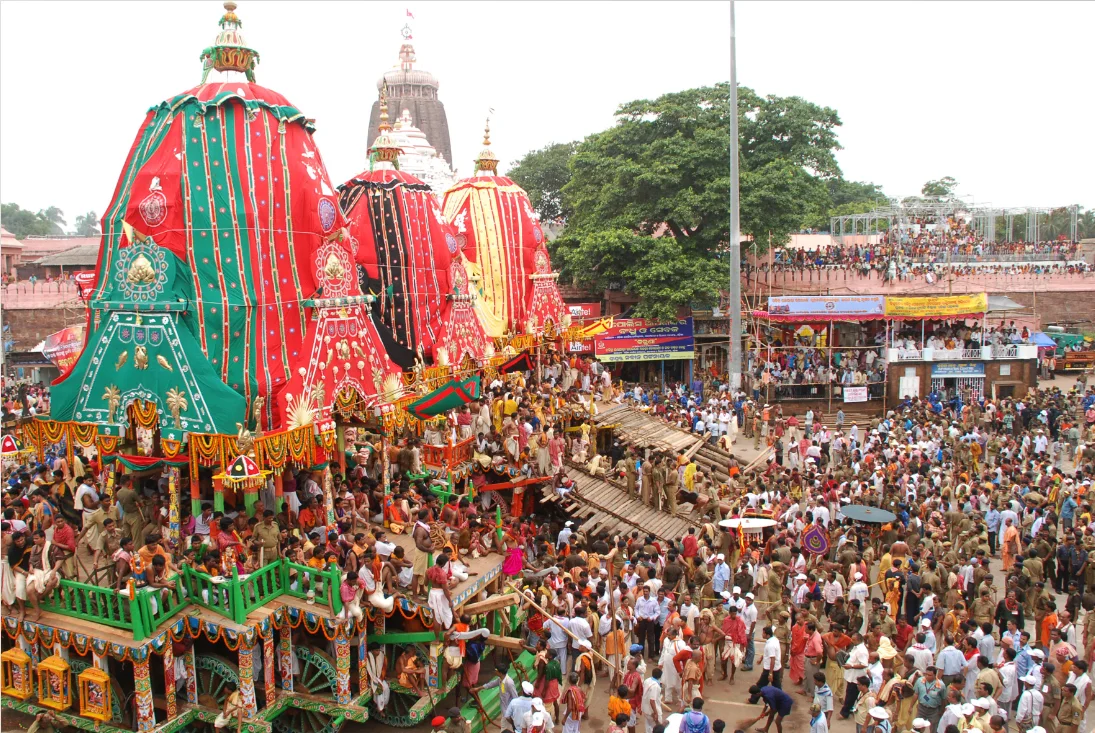
But it is not yet time for the Lord of the Universe to enter His house. Goddess Laxmi is thought to still be angry with Her Lord. She closes the door and won’t allow Him in, clearly distraught.
The Creator of the Universe begs Her pardon and tries to persuade Her of His purposes. The goddess finally gives in to His pleas and lets Him enter His house.
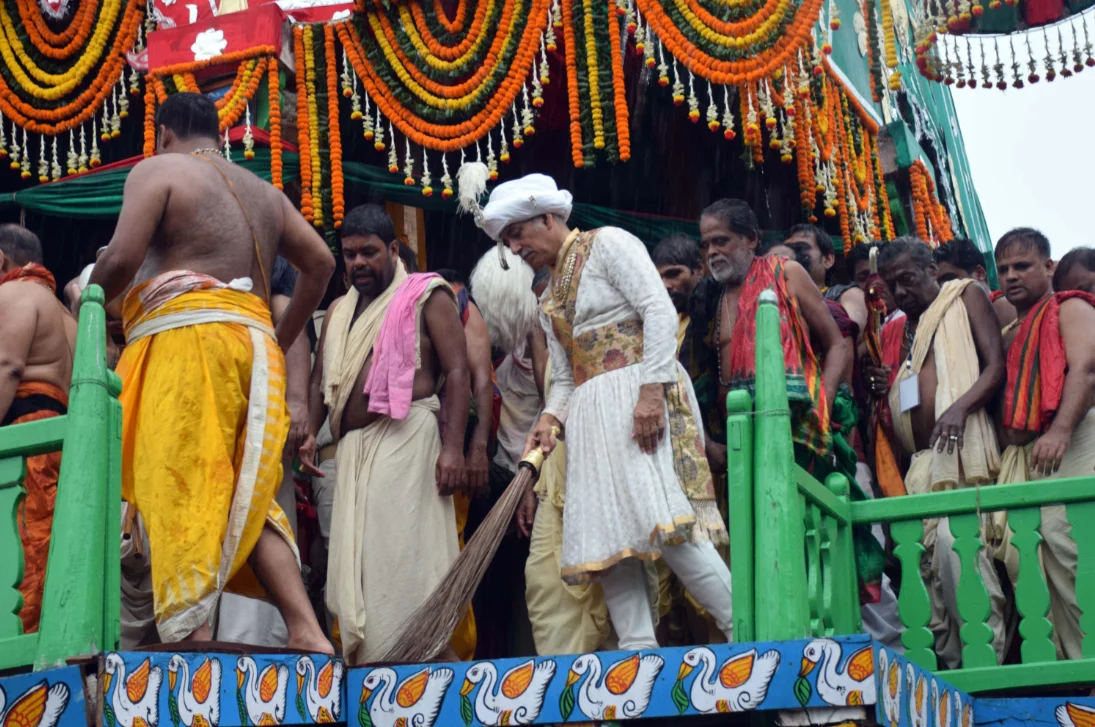
The Niladri Bije, which signifies the gods’ return to the Garbha-griha, concludes the yatra. In 2015, 17.5 lakh devotees joined the Nobo Koliboro celebrations in Puri, setting a record 190 years after 2.25 lakh pilgrims flocked to the Puri Temple in 1825.
Rath Yatra

